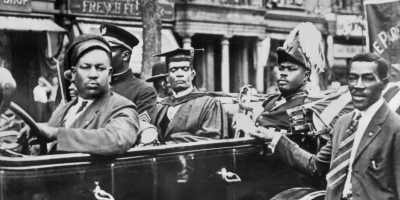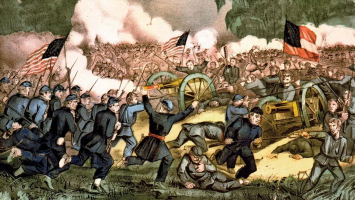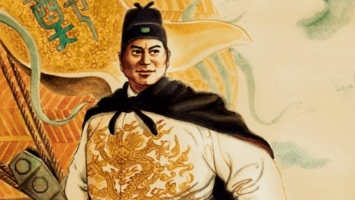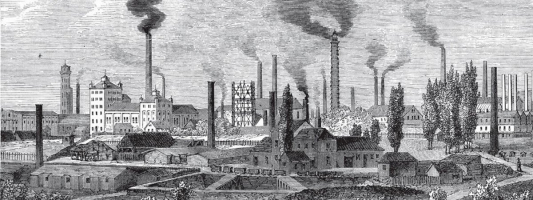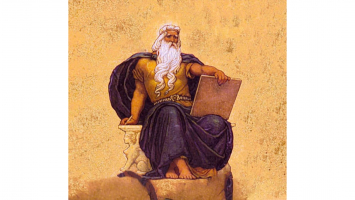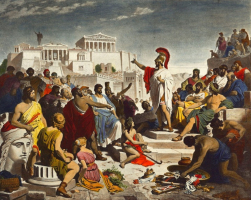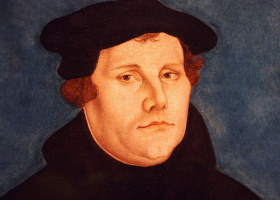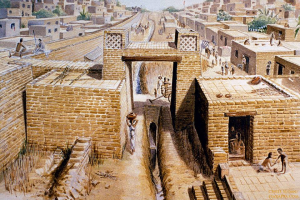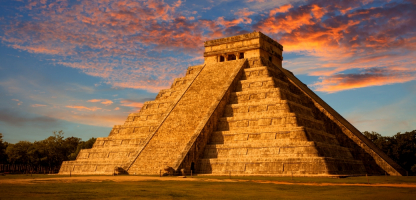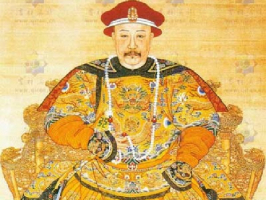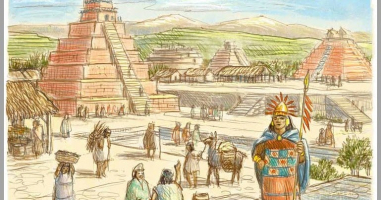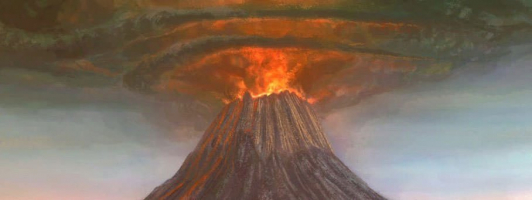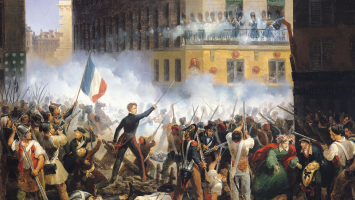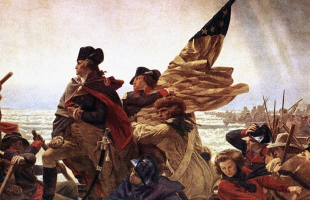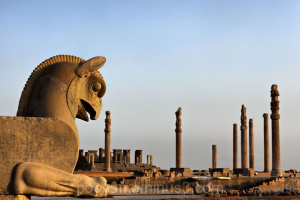Top 12 Interesting Facts About The Renaissance Artist - Michelangelo
Italian Renaissance artist Michelangelo di Lodovico Buonarroti Simoni (1475–1564) is regarded as one of the finest artists of all time. He was a master of ... read more...sculpture, painting, and architecture, among other artistic mediums. Numerous intriguing events occurred in Michelangelo's life. These include his early artistic career effort at forgeries and his covert study of corpses to learn the specifics of the human body. Despite being a master craftsman, Michelangelo is rumored to have had an odd and harsh personality. Due to this, he developed a fierce rivalry with Leonardo da Vinci and Raphael, the other two prominent artists of his day. Learn more about Michelangelo by reading these 10 fascinating facts about him.
-
Although Michelangelo was never married and had no children, it is said that he had relationships with both men and women. The remarkable thing about Michelangelo was that, despite becoming wealthy, he lived close to poverty and hardly ever took a bath or even changed his clothes. It is reported that when he died, his garments had to be cut and peeled off of him because they were so filthy and stuck to his body. The artist led a secluded existence in his later years, only having contact with others when required to do so by his work.
Many of the traditional characteristics of the artist were exhibited by Michelangelo. He was hard on both his efforts and himself. I am not a painter, he famously said in one of his many letters regarding his work on the Sistine Chapel.
He was notorious for his critical, unpredictable moods and frequently unsatisfied. In fact, Pietro Torrigiano, one of his classmates, was so enraged at Michelangelo for his talent or, more likely, for his sharp mouth that he hit him in the nose, permanently twisting it.
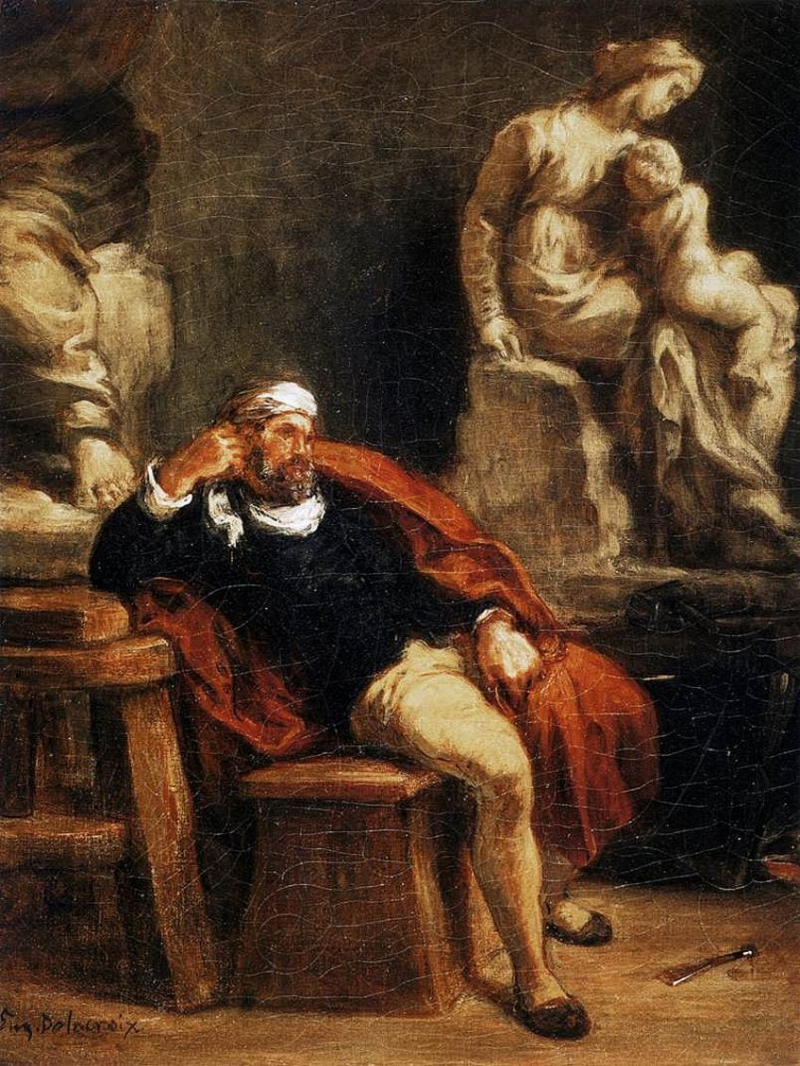
Michelangelo in his studio (1849-1850) by Eugène Delacroix; Eugène Delacroix, Public domain, via Wikimedia Commons 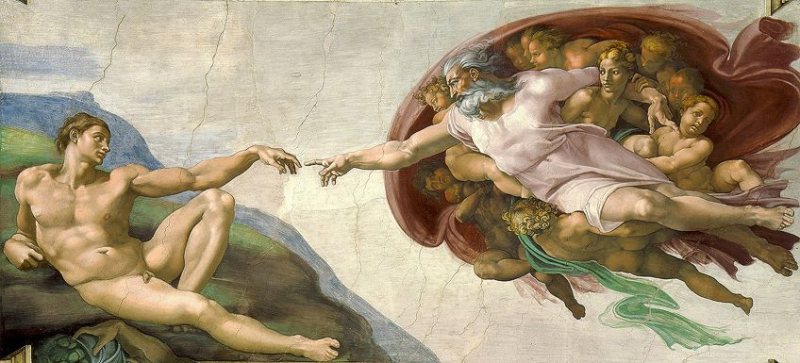
The Creation of Adam (c. 1511) by Michelangelo, one of the fresco paintings on the ceiling of the Sistine Chapel; Michelangelo, Public domain, via Wikimedia Commons -
After hearing from his patron, Lorenzo de Medici, that the Roman sculpture known as Sleeping Cupid was valuable, a young struggling Michelangelo recreated it. He burred the sculpture with acidic earth to make it appear aged and ancient. He sold the sculpture for a substantial sum to Cardinal Raffaele Riario.
Michelangelo's career was established as a result of this devious behavior. The Cardinal soon learned about the swindle and recovered his money from Michelangelo. The sculpture's abilities so impressed the Cardinal that he hired him to work in Rome. Several years later, he was awarded a contract to carve the Pietà, the sculpture that established his reputation as an artist. In Rome, he would eventually produce the sculpture that would propel him to prominence, the Pietà (1498).
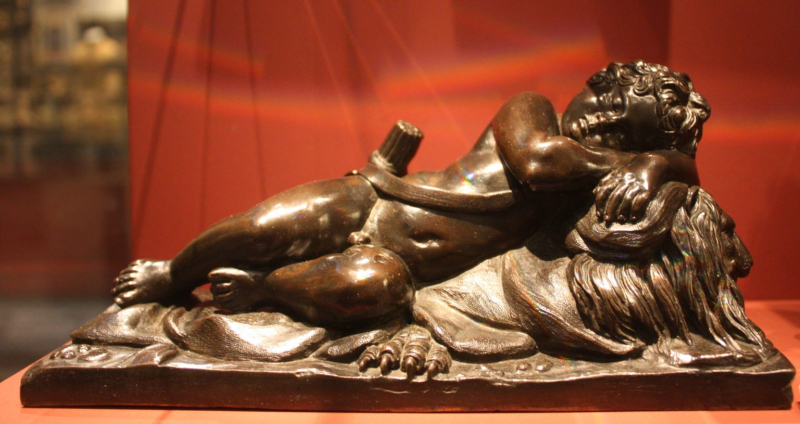
Sleeping Cupid – Wikimedia Commons 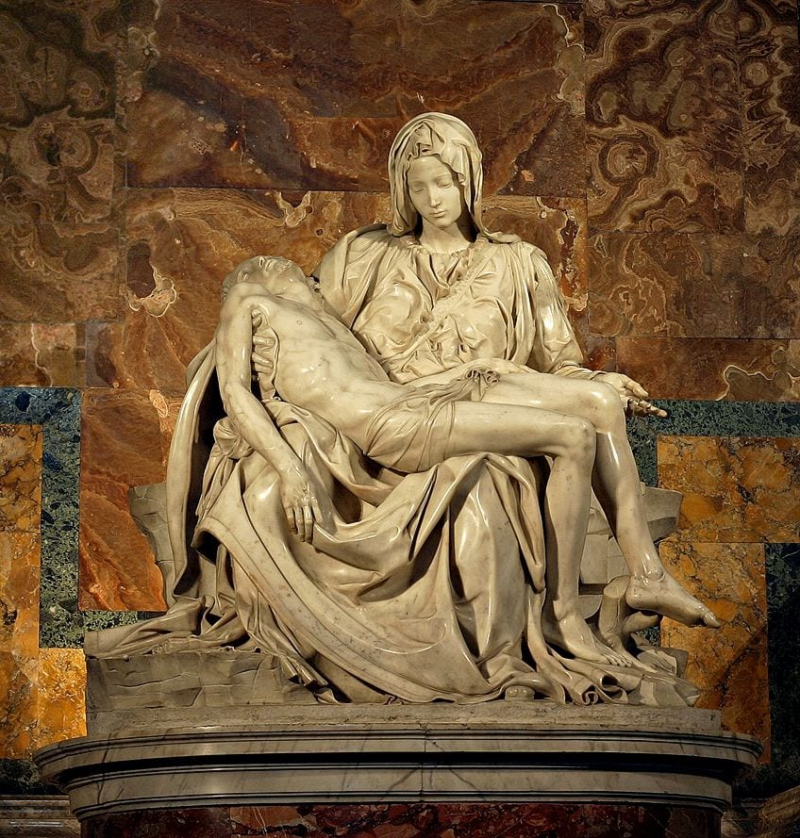
Michelangelo’s Pietà (1498–99), St. Peter’s Basilica, Rome; Michelangelo, CC BY-SA 3.0, via Wikimedia Commons -
When it came to selecting the perfect marble for his masterpieces, Michelangelo was known to be highly fastidious. The marble slab he eventually chose for David had been quarried and abandoned for over 40 years by a number of previous artists who had given up on the project. In the two years that followed, Michelangelo sculpted the figure of David from that deformed block of marble, a process widely summed up by artist and writer Giorgio Vasari as the “bringing back to life of one who was dead”.
Numerous artists from throughout the world believe the 17-foot-tall sculpture is architecturally perfect. Because it was too heavy to set on the cathedral's roof-line, a group of artists and consultants ultimately opted to place the monument near the entrance to the Palazzo Vecchio in Florence. However, the monument is currently housed in the Florence art museum Academia, and a replica stands in its place in the square. Michelangelo's David is one of the most recognized works of art in the world and his finest masterpiece.
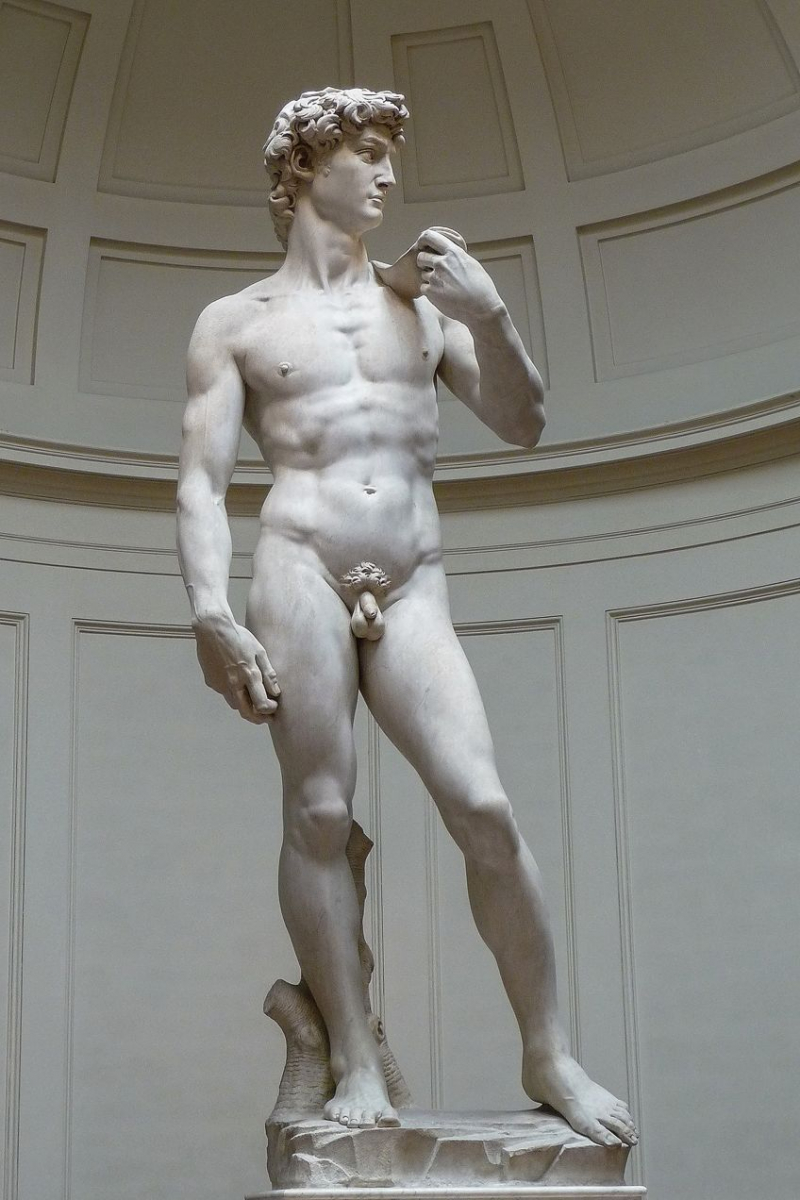
David (1501-1504) by Michelangelo; Michelangelo, CC BY 3.0, via Wikimedia Commons 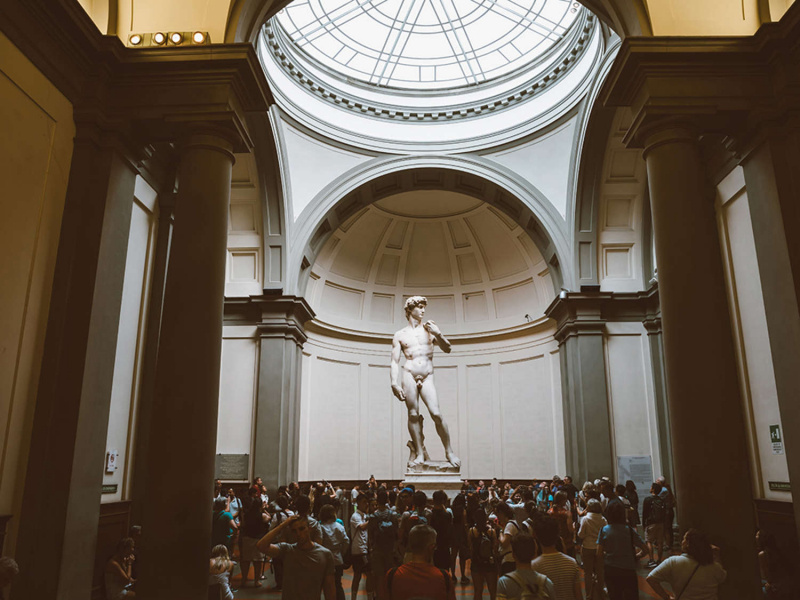
Context Travel -
Beginning in 1505, Michelangelo produced artwork for nine successive Catholic Popes, Julius II to Pius IV. His labor was extensive during the period, spanning four years of painting the Sistine Chapel to creating decorative knobs for the Pope's bed.
However, he did not always get along with everyone, as evidenced by his relationship with Pope Julius II, for whom Michelangelo had spent three years working. The artist was working on a facade for Pope Leo X when Julius II abruptly canceled the project. He did, however, have better ties with other popes, such as Pope Paul III, who defended The Last Judgment (1536) when church officials declared it offensive because of the inclusion of nude people.
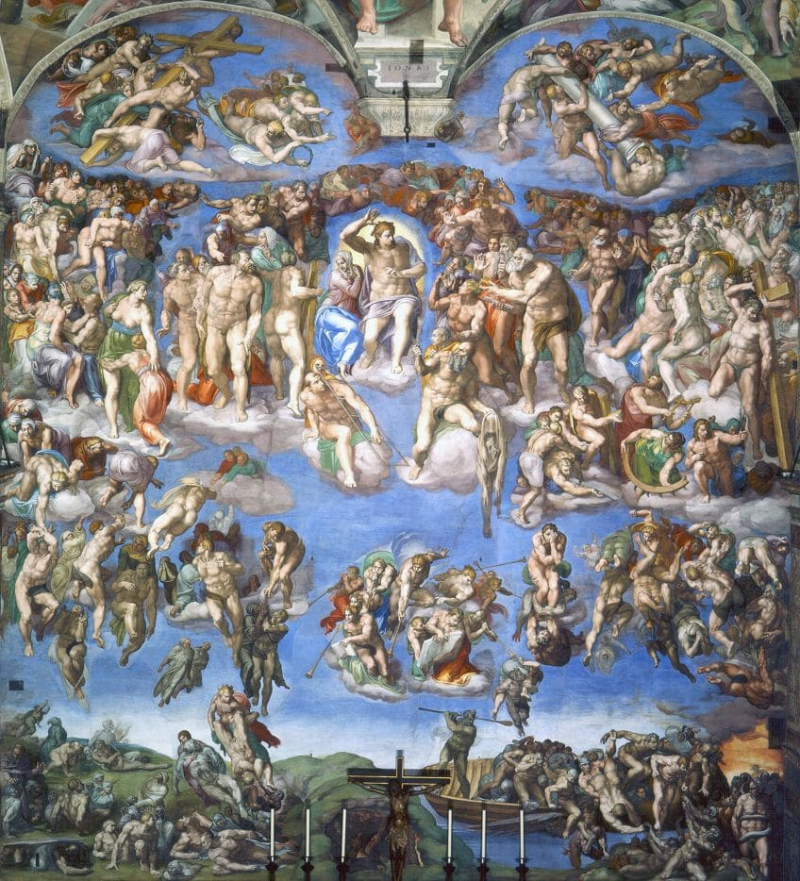
The Last Judgment (1536-1541) by Michelangelo; Michelangelo, Public domain, via Wikimedia Commons 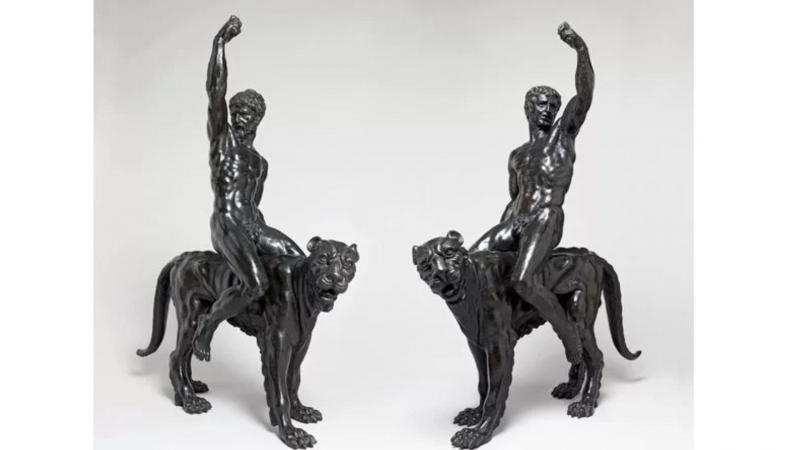
Bronze sculptures attributed to Michelangelo Buonarroti, Fitzwilliam Museum, Cambridge, UK -
Though he rarely signed his works and did not create formal self-portraits, Michelangelo occasionally buried stylized images of his face in his sculptures and paintings. He only signed his name on the Pietà. The Last Judgment fresco, which spans the full wall behind the altar of the Sistine Chapel, is one of the most well-known masterpieces into which he incorporated his likeness.
The most well-known of these covert self-portraits features St. Bartholomew holding what looks to be a piece of flayed skin with the artist's face on it. In his so-called Florentine Pieta, Michelangelo also painted himself as Saint Nicodemus, and art historians have speculated that he might be shown in a scenario with a multitude in his fresco "The Crucifixion of St. Peter."
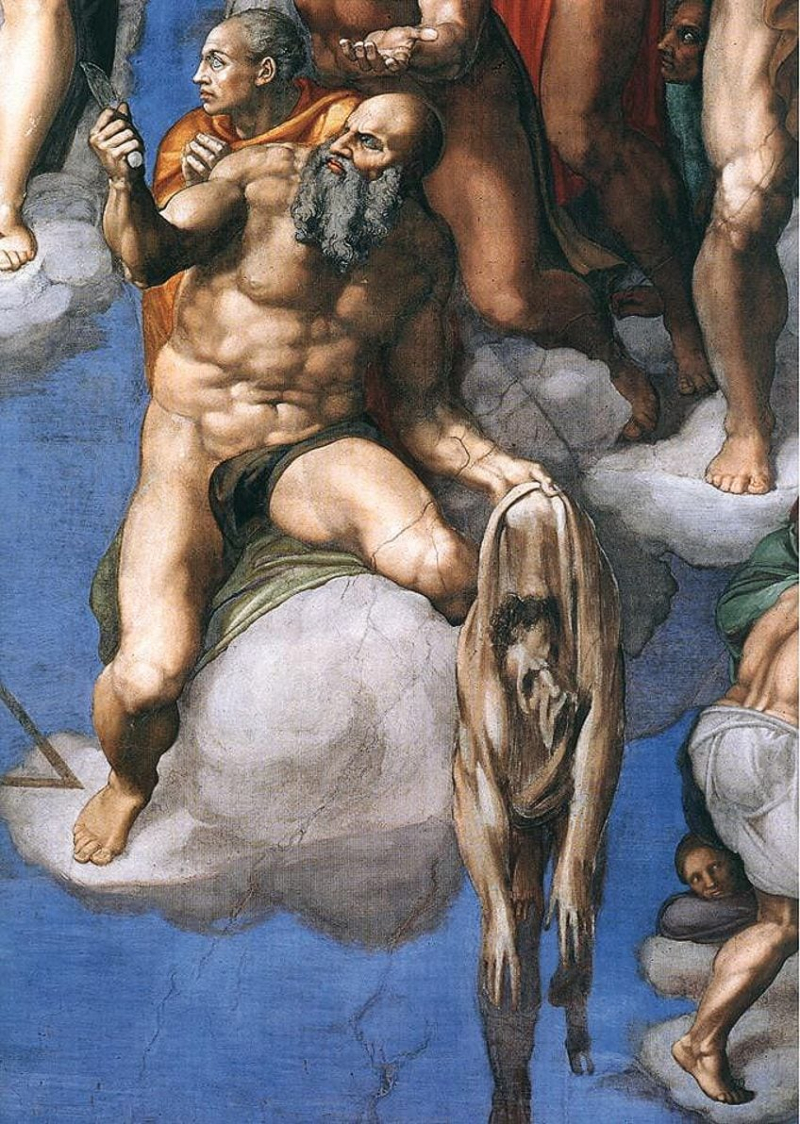
A detail of Michelangelo’s The Last Judgment (1536-1541), depicting a self-portrait of Michelangelo as Saint Bartholomew, holding his flayed skin; Michelangelo, Public domain, via Wikimedia Commons 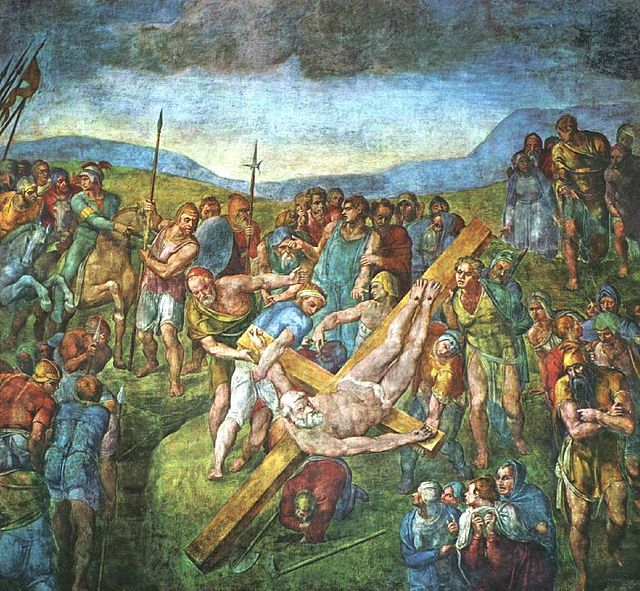
The Crucifixion of St. Peter (Michelangelo) - Wikipedia -
Although Michelangelo is primarily remembered as a sculptor, he was also a renowned writer in his day. Over the course of his career, he wrote hundreds of sonnets and madrigals, frequently noting accidental lines of poetry while he hammered away at statues in his studio. Over 300 poems were written by Michelangelo during his lifetime. He dedicated the majority of his magnificent sonnets to Vittoria Colonna, a close friend.
In his poems, Michelangelo makes heavy use of wordplay and discusses a variety of topics, including sex, age, and his overactive bladder (he laments having a "drippy duct compelling me awake too early"). Although none of these writings were officially published during his lifetime, they were widely read by Rome's literati in the 16th century, and some of them were even set to music.
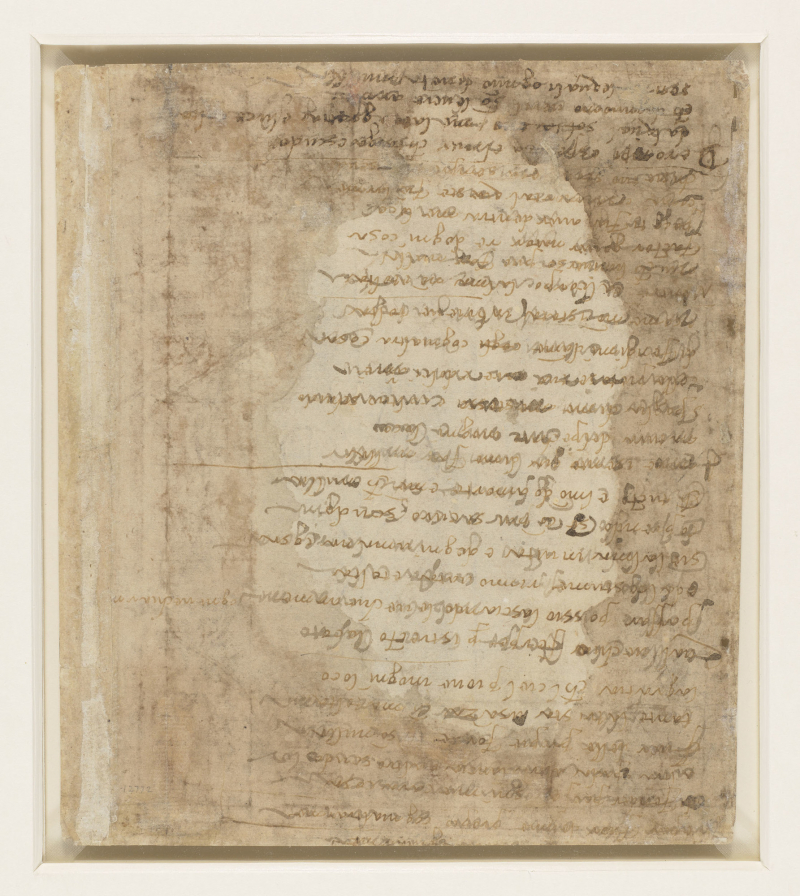
Michelangelo - Verso A draft of a poem c. 1540-45 - Wikimedia Commons 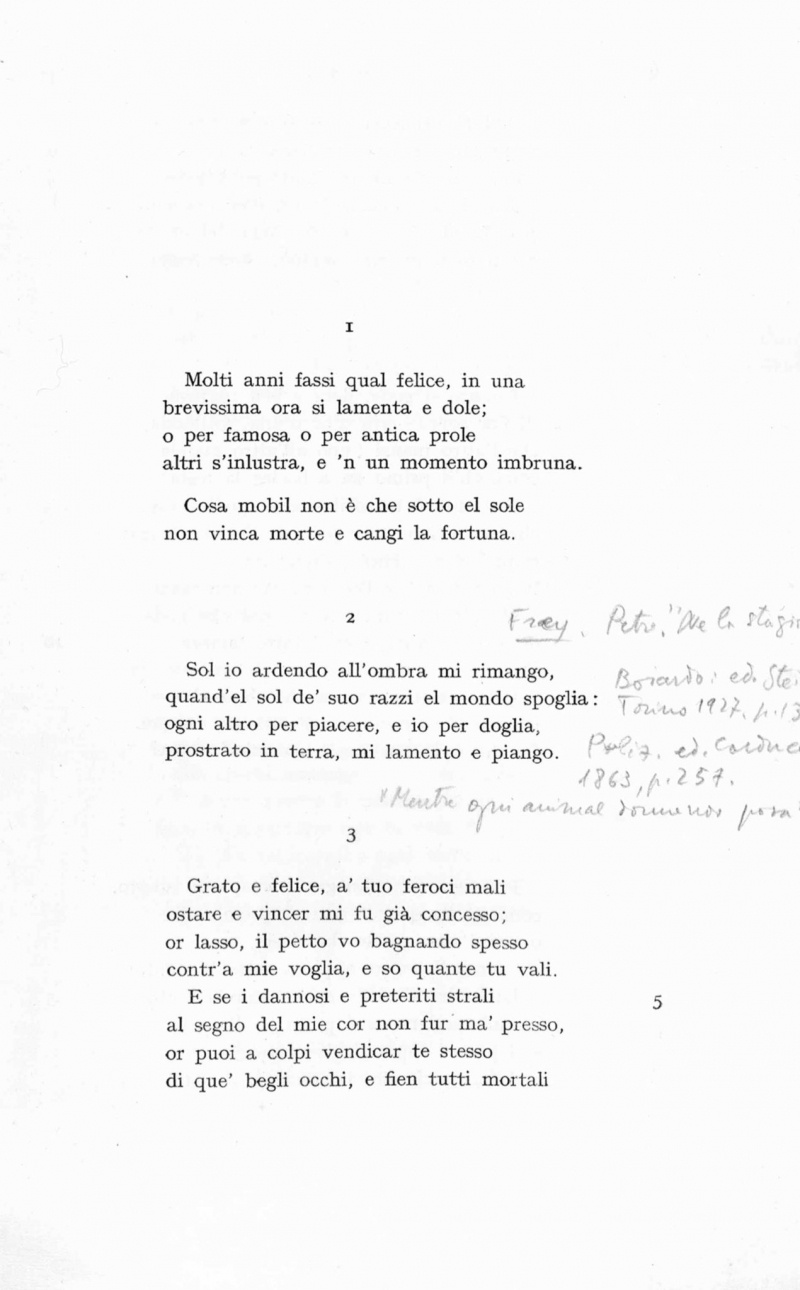
Buonarroti Rime, 1960 – Wikiquote -
The citizens of Michelangelo's hometown of Florence overthrew the governing Medici family and elected a republican government in 1527. Despite working for the Medici Pope Clement VII, Michelangelo supported the republican cause and was named director of the city's fortifications. He took the job seriously, sketching out elaborate lookout bastions and even visiting adjacent cities to study their defense walls.
When the Pope's army arrived to recover the city, his designs proved a serious impediment, and Florence survived a 10-month siege before finally succumbing in August 1530. Michelangelo could have been hanged as a traitor, but Clement VII forgave him and instantly rehired him for his role in the uprising. However, the artist's status in Medici-ruled Florence remained precarious, and when the Pope died in 1534, Michelangelo fled to Rome, never to return.
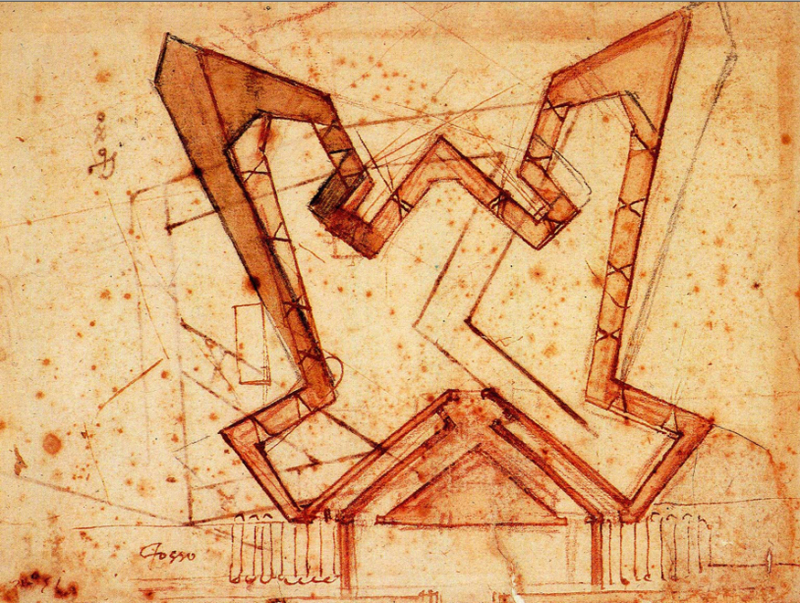
LEBBEUS WOODS - WordPress.com 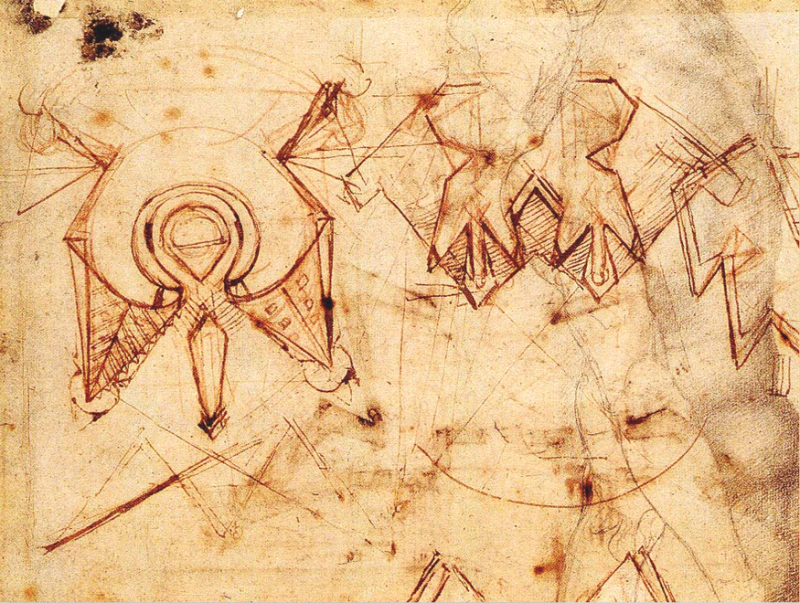
LEBBEUS WOODS - WordPress.com -
Laszlo Toth, a mentally ill geologist, jumped a barrier at St. Peter's Basilica in 1972 and smashed Michelangelo's "Pieta." The assault severed the Madonna's nose and forearm, as well as a portion of her eyelid and veil. Hundreds of pieces of marble from the costly statue were later recovered by restoration crews, including one addressed to the Vatican by a guilty American tourist who had picked it up amid the uproar. It required ten months of repair work before the "Pieta" could be displayed again, this time beneath a layer of protective glass.
The "David" suffered a similar fate in 1991, when a chisel-wielding vandal smashed off part of a toe on its left foot.

Michelangelo’s Pietà (1498–99), St. Peter’s Basilica, Rome; Michelangelo, CC BY-SA 3.0, via Wikimedia Commons 
David (1501-1504) by Michelangelo; Michelangelo, CC BY 3.0, via Wikimedia Commons -
Raphael was the hot painter in town at the time of Michelangelo's ascension, and it was Raphael who Pope Julius II first chose to work on the Sistine Chapel. This is where rivalry enters the picture. With his commissions, Michelangelo's renown grew, and the young artist stole part of Raphael's business. Out of jealousy or pride, Raphael persuaded the Pope to engage Michelangelo instead, trying to demonstrate to the Pope that the young artist was only a sculptor and could not paint as well as himself. Raphael hoped that the young artist would become overwhelmed and that he would have to come to his aid, thus defaming Michelangelo. He was obviously disappointed.
Michelangelo worked against all difficulties from July 1508 to October 1512 to finish this masterpiece, which is still revered by millions today. Talk about a lousy strategy blowing up in your face.
Raphael was initially the pope's choice to paint the chapel, but he turned it down out of resentment for the young artist whose notoriety was rising. He wanted to show that Michelangelo was merely a sculptor and that he could not paint as well as himself. Ironically, they both agreed on this viewpoint. In contrast to other artists, Michelangelo identified as a sculptor.
Today, more than 25,000 people visit the majestic chapel every day. It appears that Michelangelo was victorious in the end.
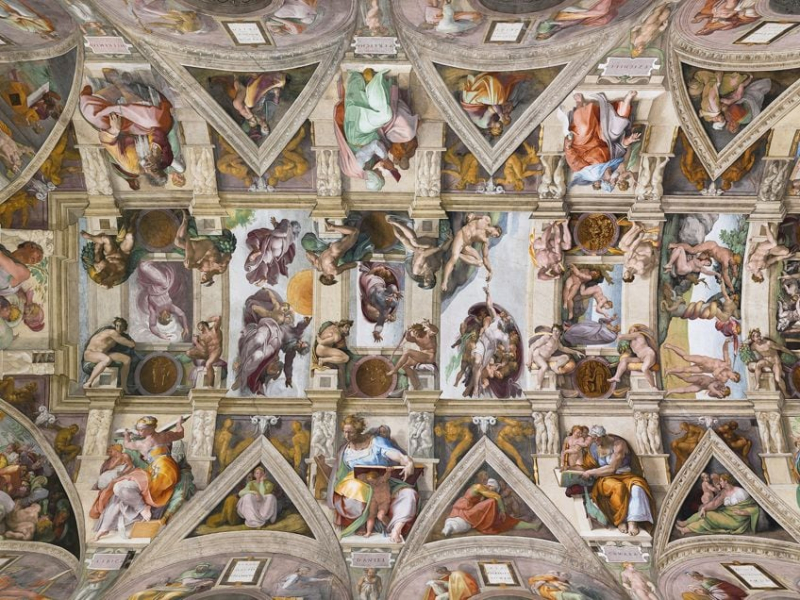
The ceiling of the Sistine Chapel; Sistine Chapel, CC BY 2.5, via Wikimedia Commons 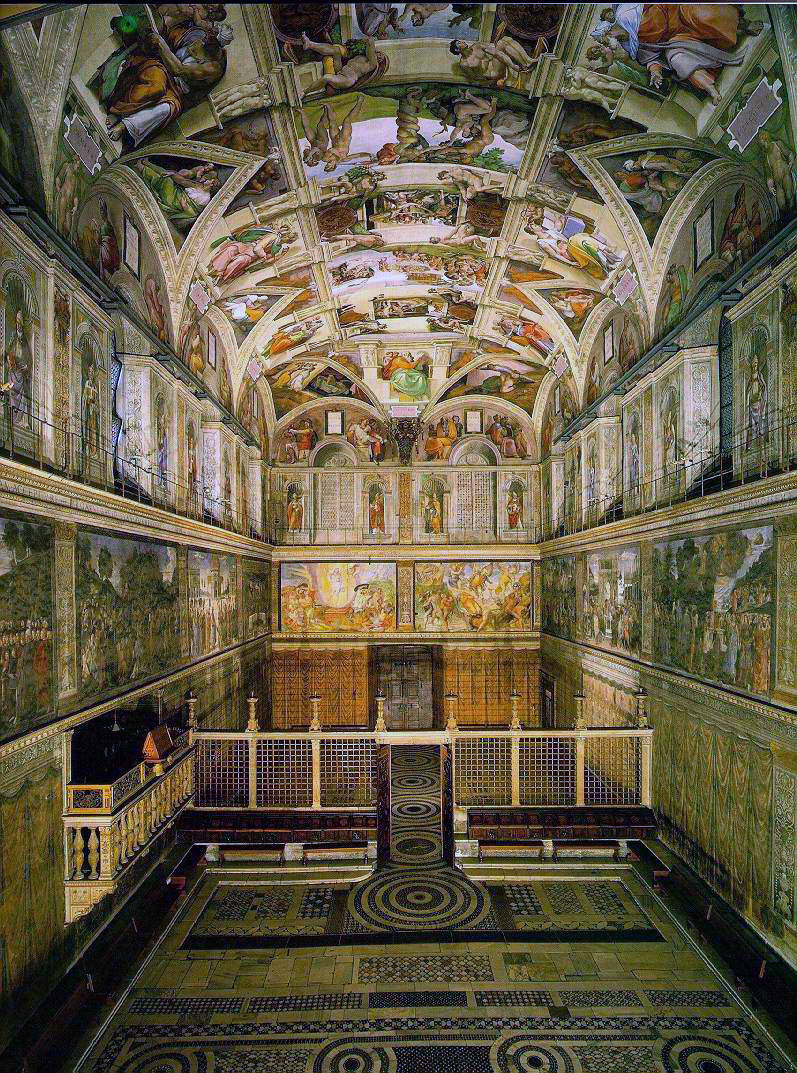
Michelangelo Buonarroti, Sistine Chapel, 1508-1512, Vatican via Wikimedia Commons -
Italians adored Michelangelo both in his lifetime and afterward, either in spite of or perhaps even because of his fascinating nature. Everyone was curious about "Il Divino," or the Divine, and everyone desired a colorful account of his life's events. This is perhaps what inspired Michelangelo to write two full-length autobiographies during his lifetime, instead of just one.
In actuality, compared to other artists from his era, Michelangelo's beliefs, life, and work are far better understood. In addition to his autobiographies, there are several records from the government or papal bureaucracy that have survived through the years, as well as letters and diaries from persons who interacted with the artist and artists who respected him. Each of the numerous government or papal projects that Michelangelo was hired to complete was thoroughly documented and archived, providing us with information on his work, schedule, and compensation during his lifetime.

Biblio.com 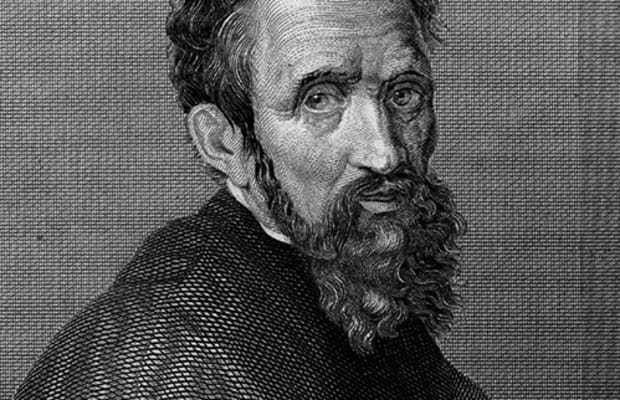
bio. Biography -
Michelangelo stated, “Many believe —and I believe—that I have been designated for this work by God. In spite of my old age, I do not want to give it up; I work out of love for God and I put all my hope in Him.”
When he was 74 years old, Michelangelo received a contract from the Catholic Church to finish building St. Peter's Basilica. Before passing away at age 88, he continued to work in the church for an additional 14 years. As it became physically hard for him to visit the job site frequently during this period, he was forced to supervise the project from home by submitting drawings and blueprints and responding to trustworthy foremen's work.
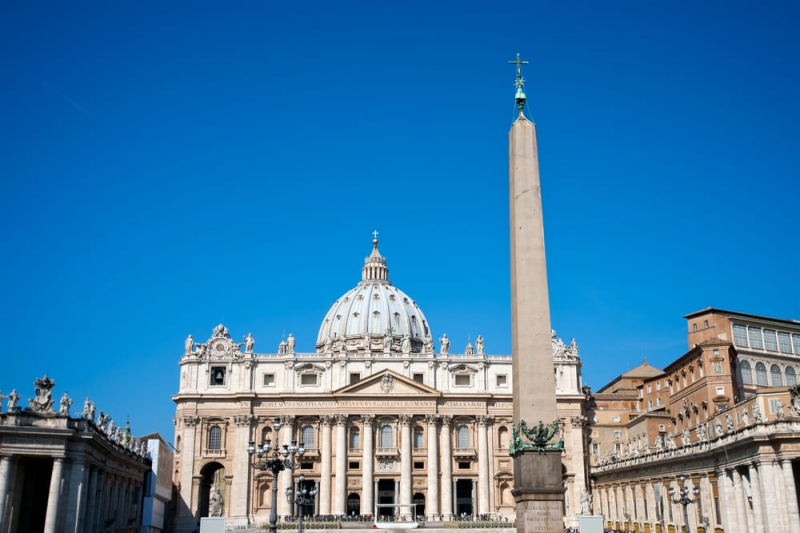
Though technically Michelangelo was the second architect for St. Peter’s Basilica, his famous green Dome is clearly the cherry on top of the beautiful church. - walksofitaly.com 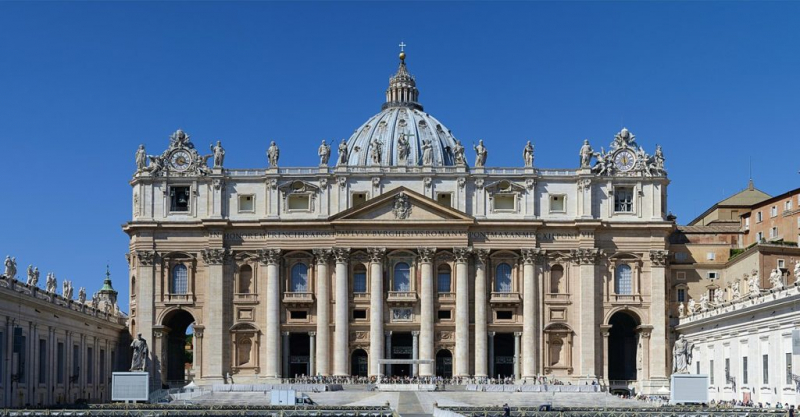
St. Peter Basilica Rome – Wikipedia -
When Michelangelo was still in his teen years, in 1493, he made a wooden crucifix and gave it to the prior of the Santo Spirito church in Florence. He was good friends with the earlier. In exchange, the previous offered him access to specific rooms where he could dissect corpses to learn about anatomy. Since practicing anatomy was against the law at the time, Michelangelo was forced to do it in secret.
Throughout his life, Michelangelo continued to dissect animals to learn about anatomy. Michelangelo was able to carve statues that seemed incredibly lifelike thanks to his study of anatomy. His works of art, including the statue of David, are unusual in that they accurately depict the human body's anatomy. This resulted from his investigation into the muscles, tendons, and blood veins of corpses in secret.
Michelangelo wasn't the only artist to study anatomy for their work, though. His rival Renaissance artist Leonardo da Vinci and others had also performed corpse dissections to learn more about the human anatomy.
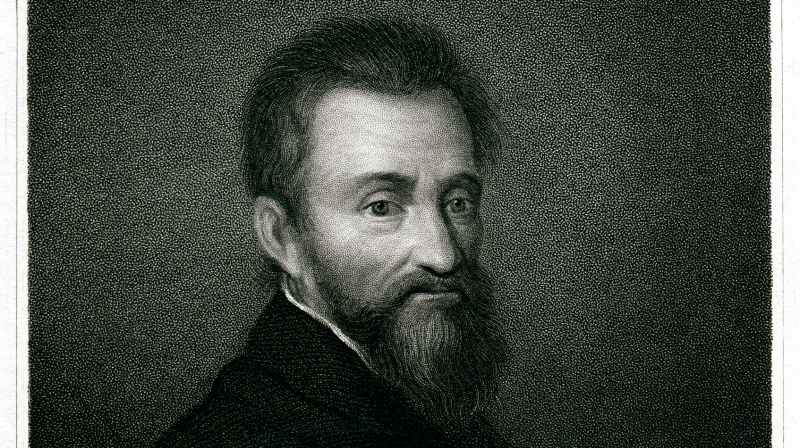
Boston Consulting Group 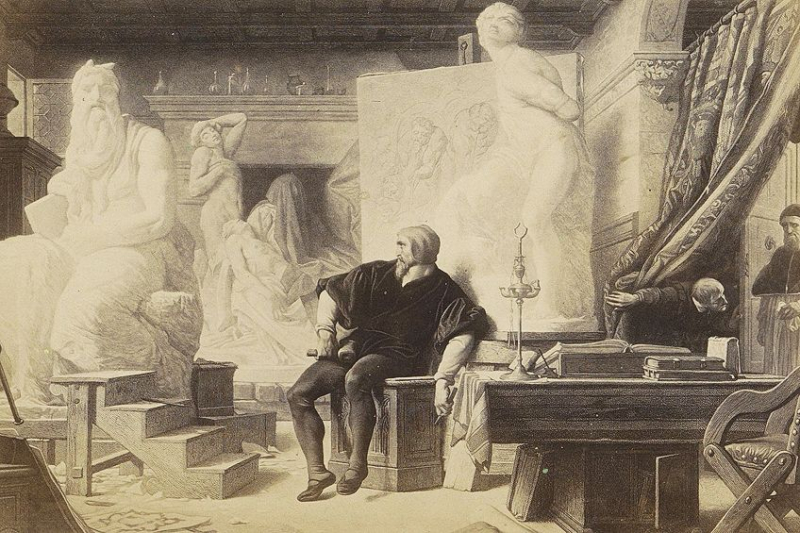
artincontext














